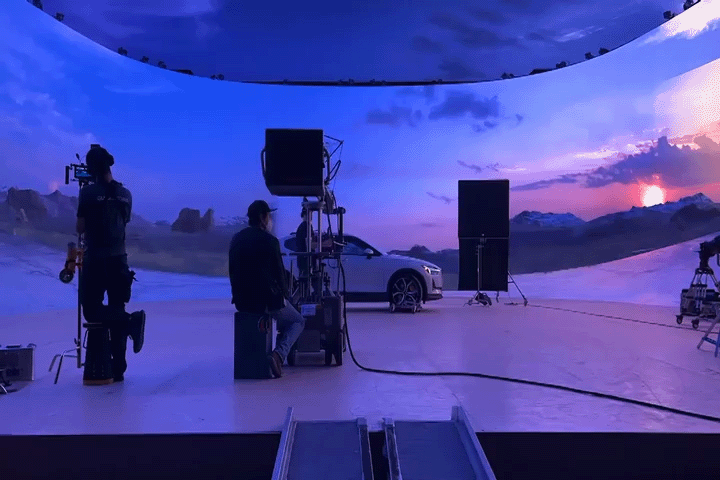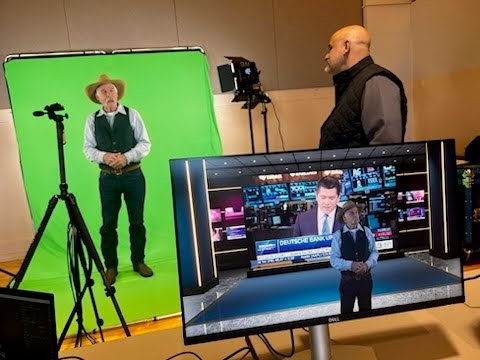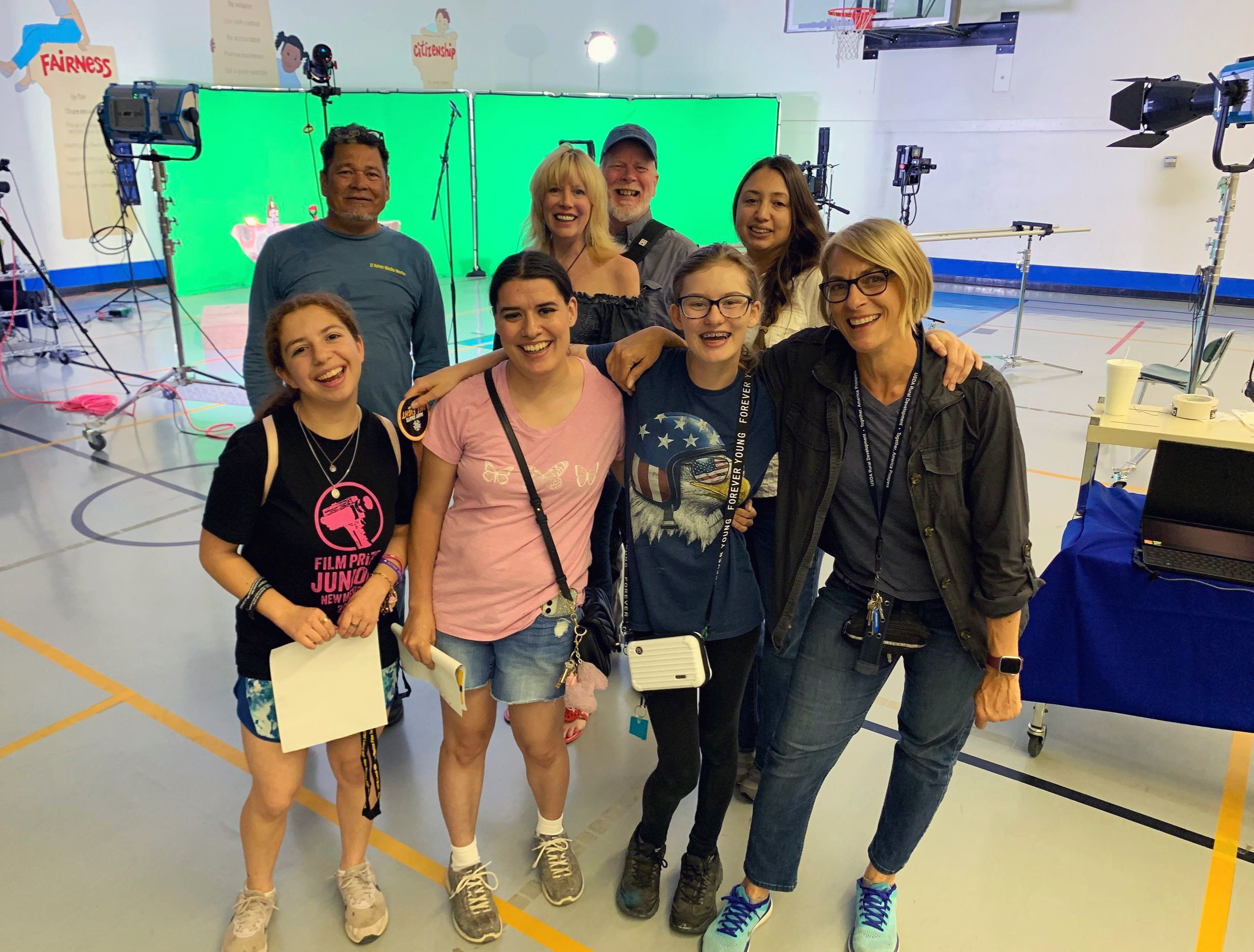LED Volume or Green screen? Which should l use?
By ERMW Team
Thursday, January 18, 2024
In the ever-evolving landscape of film and television production, innovative techniques continually redefine the boundaries of visual storytelling. The evolution of the LED Volume comes from the long-standing use of Green Screens in film and video production.
Example of an XR Volume by SmartStage in London
Modern filmmaking has witnessed a significant shift with the advent of volumes, also known as immersive sets or virtual sets. These volumetric spaces replicate specific locations or backgrounds through a combination of real props, sets, and digital elements. Utilizing cutting-edge technologies like LED panels, virtual reality, and augmented reality, volumes provide an immersive experience, allowing actors and cameras to interact seamlessly with virtual environments in real-time. The incorporation of practical lighting and reflections enhances the authenticity of performances and visual effects, ushering in a new era of realism in filmmaking.
Example of live green screen footage being chroma keyed into a virtual environment using BrainStorm 3D software. Photo taken in Raton, New Mexico by Ann Theis of ERMW.
Green Screens: A Timeless Technique:
Conversely, the classic technique of green screens, or chroma key compositing, remains a stalwart in the industry and is by far the cheaper and easier method. This method involves filming against a solid color backdrop (typically green or blue) that is replaced with a different background during post-production. While providing creative freedom, the success of green screens hinges on meticulous attention to lighting and precise acting direction during filming, with extensive post-production work needed for a convincing final result.
Key Distinctions:
Volumes offer an immersive environment for actors, fostering more interactions and nuanced performances. Moreover, volumes enable live visual effects and real-time adjustments, streamlining the post-production process. In contrast, green screens necessitate meticulous post-production efforts to seamlessly blend actors with the virtual environment.
An XR Volume Studio example owned by NantStudios
The Art of Choice:
Green screen technology remains relevant and widely used in the film industry, offering flexibility and cost-effectiveness. However, the rise of XR volumes introduces a new era of real-time virtual environments, providing immediate visual feedback, enhanced actor performances, and higher overall production efficiency. As technology progresses and these innovative setups become more obtainable, a hybrid approach combining the best features of green screens and XR volumes may become the industry norm. The future promises an exciting and dynamic landscape where both green screens and XR volumes coexist, pushing the boundaries of visual storytelling to new heights.
Ultimately, the choice between volumes and green screens hinges on the specific needs of the artistic vision and budget of the production team. While XR volumes offer exciting opportunities, green screens are not likely to become obsolete any time soon. Their simplicity, cost-effectiveness, and compatibility with existing workflows make them an attractive choice for certain projects and situations. Green screens will continue to find their place in the industry, even as XR volumes become more prevalent.
Brainstorm 3D Demonstration
Example of live green screen footage being chroma keyed into a virtual environment using BrainStorm 3D software. Photo taken in Raton, New Mexico by Ann Theis of ERMW
BrainStorm 3D visited Raton, New Mexico on January 10th and gave a great demonstration of utilizing green screen technology in virtual environments. They showed us how people across the world can appear virtually in the same room, how to manipulate the environments to suit different project needs, and much more with their eStudio platform which pairs with other engines such as Unreal Engine to provide state-of-the-art hyper realistic scenes, even with minimal equipment and lighting. Special thanks to Key Code Media for arranging the demonstration!
















